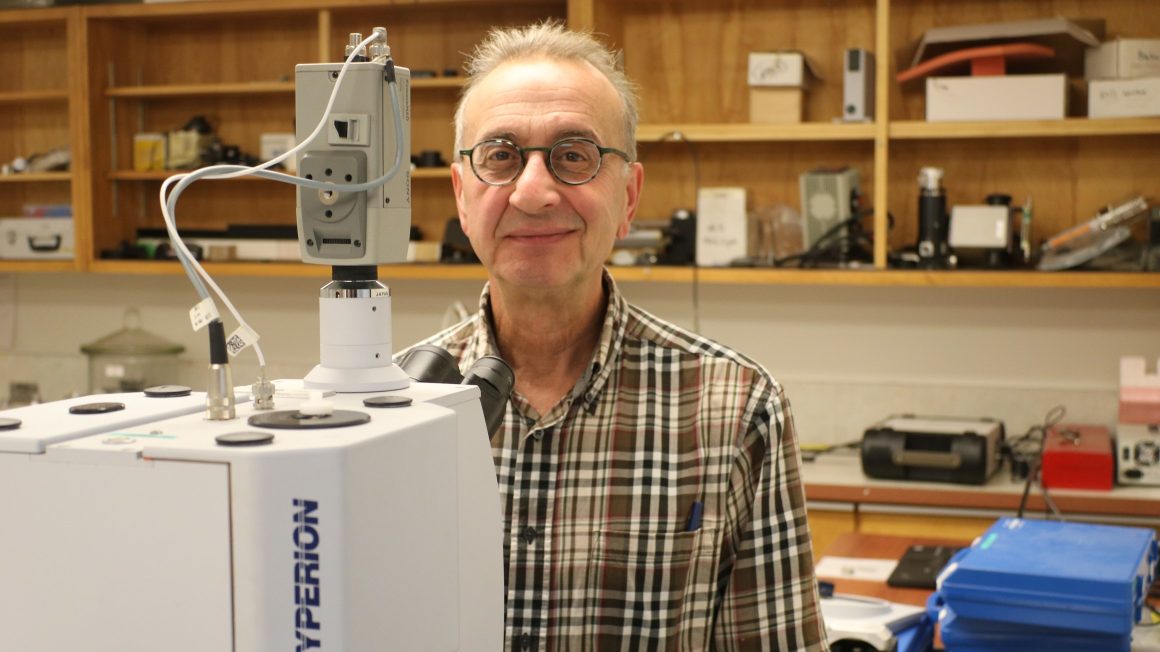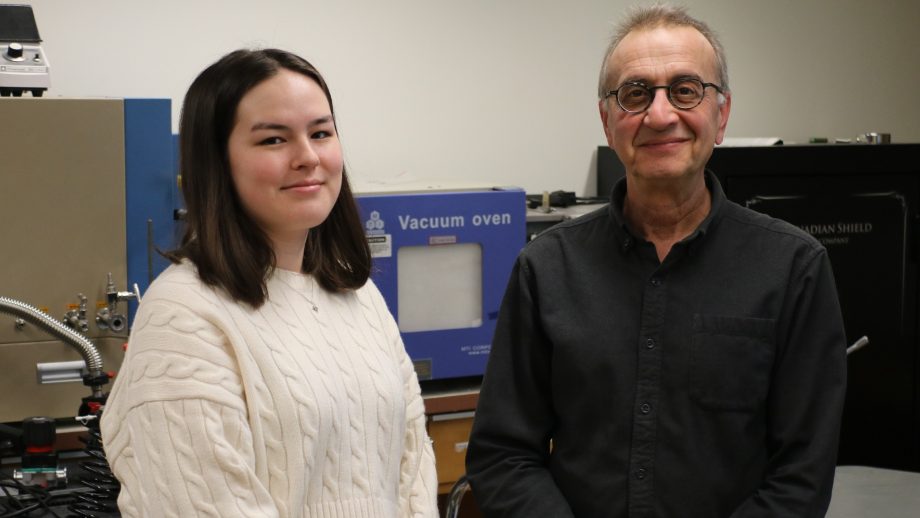A 4.5-billion-year-old sliver of outer space is being analyzed at The University of Winnipeg.
Dr. Ed Cloutis, Professor of Geography and Director of the Centre for Terrestrial and Planetary Exploration (C-TAPE), is leading a team of researchers who are analyzing the sample, collected during NASA’s OSIRIS-REx mission, using spectroscopy.
The asteroid itself dates back to the first days of the Solar System.
Dr. Ed Cloutis
“You can think of it as using a really high-end digital camera to look at how the sample reflects light through different filters,” Dr. Cloutis explained. “It’s a non-destructive way to analyze the sample, so it’s a very desirable kind of analysis because it doesn’t affect the sample in any way.”
Dr. Cloutis and his team hope to learn more about the asteroid’s colour and composition, which could help determine whether the building blocks of life were delivered to Earth by an asteroid impact. A central research question is whether the asteroid has organic molecules, which would hold implications for the initial kickstarting of life on Earth.
“We’re looking to see how complex are these organic molecules, because the asteroid itself dates back to the first days of the Solar System,” Dr. Cloutis said. “When Earth formed, life would have had a better chance of arising if it was seeded with complex organic molecules.”
Bennu, a near-Earth asteroid that took NASA’s spacecraft two years to reach, was chosen as the target of study because it is a time capsule of sorts left over from the birth of the Solar System.
“We like to think of these asteroids as remnants of the Solar System when it formed,” Dr. Cloutis said. “Not every space rock that’s out there is going to hit a planet. Some of them will stay in space for the full four-and-a-half-billion-year history of the Solar System.”
Delicate cargo
Great care must be taken to ensure the sample—a vial of black powder weighing about 200 milligrams—is never exposed to the Earth’s atmosphere.
Special equipment is required to take possession of the sample, which must be housed in a sealed, nitrogen-filled box and stored in a safe.
Meteorites are often recovered and studied, but they hold more limited research potential.
“When a meteorite lands on Earth, it immediately starts to get contaminated by microbes and other stuff in the atmosphere,” Dr. Cloutis said. “This asteroid sample, by contrast, is a pristine slice of what’s out there in space.”
NASA’s Origins, Spectral Interpretation, Resource Identification, and Security-Regolith Explorer, or OSIRIS-REx, launched Sept. 8, 2016 to collect a sample of rocks and dust from the Bennu asteroid.
Seven years later, on Sept. 24, 2023, the sample parachuted into the Utah desert. The spacecraft then departed on another mission. Dr. Cloutis spent the day with baited breath while watching a live feed of the drop.
“It was kind of a relief, just because of all the years that you put into a space mission,” he said. “Until it arrives back to Earth, there are no guarantees.”
Canada supplied an instrument for the spacecraft, in exchange securing a chance to analyze a portion of the sample for research purposes.
It’s exceedingly rare for an asteroid sample to reach Earth at all, let alone visit Canada.
“This is only the third mission to bring back a piece of asteroid,” Dr. Cloutis said.
Tens of grams of the asteroid were returned to Earth, most of which will be set aside for future research.
UWinnipeg will have possession of its portion of the sample for two weeks. It will then be circulated among a research chain of half a dozen Canadian universities.
Dr. Cloutis and his team plan to publish their findings in the spring.
About Dr. Ed Cloutis
Dr. Ed Cloutis is a member of the OSIRIS-REx Canadian Sample Analysis Science Team. He is also a member of science teams associated with a number of planetary exploration missions, including the NASA-led Dawn asteroid rendezvous mission, the NASA Mars Science Laboratory (Curiosity) rover, the NASA-CSA OSIRIS-REx asteroid sample return mission, and the European Space Agency’s ExoMars Trace Gas Orbiter and ExoMars rover.





